Net Encounters

The Net Encounters project series opened a platform for new internet-based formats of direct exchange between artists and audiences through online artworks commissioned by the HEK. Its aim was to create a positive reaction to the pandemic by employing the artists to share their knowledge and know-how in an innovative form and nurture relationships between themselves and the public.
With the implementation of strict social distancing rules during the pandemic, the internet’s role as a networking tool rapidly gained prominence, which also drew new attention to net-based art. The HEK’s Net Encounters invited artists to devise micro-performances or transactions to facilitate new forms of connection – bridging the distance. The aim was also to initiate new relationships between the public and artists, with the HEK in the role of mediator. Encounters took place through artworks or as a transfer of knowledge.
Micro-performances focused on the direct encountering an artistic work. These were either live performances in analogue locations made accessible via digital tools or online performances that took place on screen, both of which put the spotlight on the live experience of a work. Some of the works took the form of transactions, where encounters took place as an exchange of content.
The programme’s focus was on the experimentation with new formats of direct exchange. Artists The critical perspective artists take on the world, often let us see what we believe to know from a new angle. May artists open our eyes and senses to new inspiration and challenges!
The series Net Encounters took place from January to June 2021, with the presentation of a new project every month. Participating artists: Andreas Gysin & Sidi Vanetti, Rita Hajj, Lauren Huret, Till Langschied, Ceylan Oztruk and Sarina Scheidegger.
Net Encounters was generously supported by the Swiss cultural foundation Pro Helvetia.
Lauren Huret
The Creature, 2021

Lauren Huret’s work for the Net Encounters series offers anyone the opportunity to commission and purchase a unique personalised video work based on the information the artist retrieves about them online.
Lauren Huret’s own statement on her work The Creature (2021):
“Since the dawn of social media, I have been fascinated by people’s online behaviour. How people share parts of their lives, how they deal with self-promotion, how they promote themselves, etc. Every time I put something online, I can’t help but think I’m doing something wrong. This is partly from distrust of surveillance capitalism and a fear being judged, but mostly because I feel that sharing selected aspects of my life can be misleading (sometimes deliberately), risky and or totally boring. Nonetheless, I continue to share and post, and often feel obliged to do so as an artist. Despite my scepticism, I find this phenomenon extremely fascinating, especially the sheer amount of information and images that people willingly feed into the public space (or rather, to the trickster of public space) that is the internet. As a patron of the arts, I’m offering you the easy option of commissioning me to create an artwork on your online presence, a portrait of the digital age during the time of mass sharing. It is a record of an investigation I will make about you, a temporal archive of your online self. No private information from our correspondence or previous exchanges (e.g. your contact information) will appear in the artwork, only what is found online. It’s as if we are complete strangers. As an artist, I will try to figure out who you are by following your trails, and rely on my instinct to create your video portrait. The final work therefore reflects the person I imagine you to be as well as my own subjectivity. It will be influenced by my mood – sometimes prophetic and dramatic, sometimes light and funny, sometimes strange and absurd. You are the model, I am the painter.”
If you would like to commission your own video work, contact Lauren Huret: http://laurenhuret.com/the-creature.
Lauren Huret (*1984 in Paris) lives in Geneva. Her work, mainly comprising videos, installations, performances and collages, is based on an ongoing investigation of how our media and technology cultures influence our belief systems. She has exhibited at Kunsthaus Langenthal, Hard Hat Gallery in Geneva, La Panacée in Montpellier, Copenhagen Contemporary, Centre d’art contemporain de Genève, Centre Culturel Suisse in Paris, Haus der Elektronischen Kunste in Basel and Jeu de Paume in Paris, among others. Her performances have taken place at the Kunstverein Göttingen in Germany, the Swiss Performance Prize at the Museum of Art Lucerne, the Schinkel Pavilion in Berlin, the Théâtre de l’Usine Geneva, the Festival Les Urbaines à l'Arsenic in Lausanne, for the international organisation ICRC in Turkey and in London, among others. Recent publications include: Artificial fear, Intelligence of Death, co-published by Link Editions and Kunsthaus Langenthal (2016); L’âge des techniciens, with Pacôme Thiellement, published by Clinamen (2017); and Praying for my haters, published by CCS Paris (2019).
Year: 2021
Type: Video
Link to the artwork: https://vimeo.com/504812630
Artist website: http://www.laurenhuret.com
Net Encounters was generously supported by the Swiss cultural foundation Pro Helvetia.
Till Langschied
Graphics-Incantation-Formats, 2021
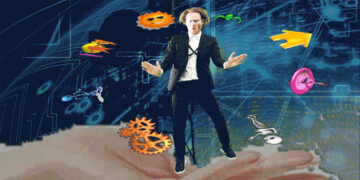
In Till Langenscheid’s Net Encounters contribution, the artist’s performance avatar Till Tumaroh invites us to see the internet as a magically charged world, abundant with its own stories and myths.
Till Langschied on his work:
“The digital time-traveller Tumaroh discovers ‘Graphics-Incantation-Formats’ – G-I-F for short – in the early days of the internet. He finds out that these gif animations carry a secret power when an internet user receives a gif, which is meant for them, and saves it on their computer.”
To enable Net Encounter visitors to obtain their gif from one of the eight “Graphics-Incantation Formats”, Tumaroh has programmed a Selecter AR app, accessible via Instagram or Facebook. By tapping on the starter graphic, one is assigned a gif. This can be documented on Instagram and Facebook as a video or photo. Afterwards, the user can contact Till Langschied or the HEK via Instagram or Facebook with their photo or video recording from the app or post a story on the respective platform, tagging Langschied and the HEK. Upon this, they receive the corresponding gif as an original file, as well as a digital magazine with more information about the “Graphics-Incantation-Formats”, with an illustrated history of their discovery and their magic. In a live online performance, Tumaroh also assigns gifs to the visitors present and answers questions about the myths of the internet.
Till Langschied is a German visual artist, who lives in Basel and works in various media. Originally from Frankfurt am Main, he studied at AMD Düsseldorf and with Chus Martinez at the Institut Kunst HGK in Basel, where he graduated in Fine Arts in 2019. Langschied’s artistic research focuses on humanity’s longings and dreams, and how these are projected onto an “other” – namely technology and nature. His work explores the ever-evolving relationships between virtual and analogue spaces. Operating at the boundaries of these realms, many of his works are developed in digital formats and then transformed into physical objects and installations, hence questioning the agency of the virtual. Within his practice, Langschied developed the performance character Till Tumaroh, who serves as his avatar on various levels within his work. Tumaroh’s written manifesto was published by Éditions Extensibles, Paris, and was performed as a live talk at the Librairie du Palais de Tokyo in Paris and Dampfzentrale in Bern. Langschied’s work has been exhibited internationally, including Kunstraum Niederösterreich (Vienna, 2020), Haus der elektronischen Künste Basel (Münchenstein, 2019), Au Lieu (Paris, 2019), Kunstverein Freiburg (2019) and Binz 39 (Zurich, 2019). In 2020 he was invited for the Lago Mio Residency in Lugano, Switzerland, and in 2021 Pro Helvetia awarded him a residency in China.
Year: 2021
Type: AR-App
Artwork: https://www.facebook.com/fbcameraeffects/tryit/409629776938802/
https://www.instagram.com/ar/409629776938802/
Artist: https://till-langschied.de
Net Encounters was generously supported by the Swiss cultural foundation Pro Helvetia.
Gysin-Vanetti
mail@gysin-vanetti.com, 2021
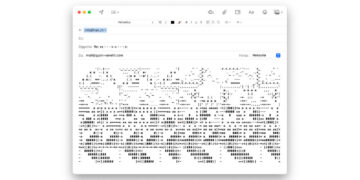
The project Gysin-Vanetti conceived for Net Encounters exploits one of the internet’s most well-known services: e-mail. In a time when digital communication continues to accelerate and find additional new forms, e-mail almost seems like an old-school mode of connection. Curious to re-evaluate electronic e-mail as a medium of exchange, the artists created an e-mail address and automatic reply service: an invitation to the audience to interact directly with them through written words.
An e-mail arriving at the address causes the server to automatically generate a geometric artwork in reply to the sender. This artwork is produced by an algorithm that translates characters from the e-mail’s initial subject into new geometric configurations. The result is deterministic: the same input produces the same output. Anyone can obtain one or numerous personalised art works for free.
At the same time, the public is given the opportunity to ask questions or send their comments to the artists in the text body of their e-mail. For the duration of the work, the artists take time every 10 days to respond to questions and comments and reply with their own observations. All participants receive a joint response where their questions and ideas appear anonymously along with the artists’ comments and responses.
Please note: the artist’s responses (work and answers) might land in your spam folder, so please check this if you’re awaiting an answer.
Andreas Gysin & Sidi Vanetti are an artist duo who explore images and patterns using the geometry of multi-use displays, combining different disciplines from fields such as visual communication, architecture and new technologies. In addition to their work as teachers and designers, they build temporary interventions or permanent installations in public spaces and museums. Their projects are characterised by the personal use of recycled hardware, which is not altered as such but used in a manner different to its original application, with the aim of creating new visual permutations. Both born in 1975, Andreas Gysin and Sidi Vanetti have been working together on research projects since 2000, after their joint thesis at the Ticino University of Applied Sciences and Arts.
Year: 2021
Type: E-mail
Artist website: https://www.gysin-vanetti.com
Net Encounters was generously supported by the Swiss cultural foundation Pro Helvetia.
Sarina Scheidegger
Becoming a Stream, 2021
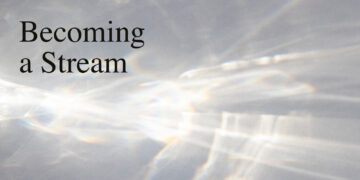
Water is considered a carrier of memory and knowledge. It is not only a resource, but also as a connective essence inherent to human and non-human beings. Sarina Scheidegger’s Becoming A Stream is a collection of manifold photographs of water, taken from various perspectives and angles. The artist invites anyone to send her their pictures of water via e-mail or Instagram, to which she responds with a personalised and unique text. As the images and texts assemble over the period of a month, they eventually form a body of water themselves.
The collected images and texts explore water not only as a quantifiable and instrumentalised substance, but above all reflect how it serves as a lively collaborator in our ways of knowing, thinking and acting. Inspired by the writer Astrida Neimanis, who in her book Bodies of Waters explores the implications of a glass of water’s circulatory journey, Scheidegger’s texts reflect on water’s collaborative and interconnective aspects and the watery, spongy and fluid elements that surround us. For the typographic part of this project, the artist collaborated with graphic designer Kambiz Shafei, continuing their longstanding partnership.
Project start: 01.04.2021
Sarina Scheidegger is an artist, writer and editor, whose work very often takes form in collaborations, mainly in Basel, Switzerland. An important theme of her artistic research centres around the forms that working and thinking together can take, which she realises in various constellations and collaborations. In a project with Argentinian artist Jimena Croceri, the two created a series of performances dealing with water(politics), hydrofeminism and fluidity. Scheidegger holds a Master of Contemporary Art Practice (HKB Hochschule der Künste Bern) and has received numerous international grants and awards, including the 2018 FLORA residency in Bogota from Pro Helvetia’s Coincidencia programme. Her work has been shown at Istituto Svizzero, (Rome), Raven Raw Gallery, (London), Kunsthalle Basel, Crisper (Bogota), IPA Performance Festival (Istanbul), among others.
Year: 2021
Type: Instagram
Format: Photographs and text
Link to the Artwork: www.instagram.com/sarina_scheidegger/
Net Encounters was generously supported by the Swiss cultural foundation Pro Helvetia.
Rita Hajj
A turn on, a turn off, 2021
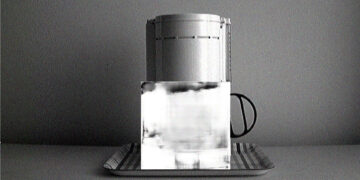
For Net Encounters, Rita Hajj shares a live stream of her coffee maker for a month, inviting the audience to upload images of their own coffee or tea pots, as she develops a reflection on the history of the World Wide Web and the evolution of live streaming and online interaction.
In 1991, Cambridge University’s computer lab set up a camera to provide their staff with live images of their coffee pot. Years later, the webcam was connected to the internet and became one of the first live streams. In A turn on, turn off, Rita Hajj recreates this historic event in her studio by giving the public access to her own coffee pot via a website. She also invites users to share pictures of their coffee pots. To do so, users are invited to visit the corresponding website, agree to participate and upload a picture. Afterwards, they receive an algorithmically generated image based on a data training of coffee pots. In this sense, Hajj’s work offers a subtle critique of the social and commercial dynamics that have developed online. From a space of mutual exchange, the internet has transformed into a terrain where users are unwittingly exploited in the collection of information for profit.
Statement by Rita Hajj:
"This work emerged from questioning an encounter with a digital image. It reconstructs what became known as the world’s first webcam, set up by scientists at Cambridge University in England in 1991. Later, in 1993, the same camera broadcast a live monitoring of the coffee machine via a computer: three times a minute, the image of a coffee pot ran on the worldwide web. It is said that the image was accessed by millions of technology enthusiasts. It was reported on by the media and gave rise to many anecdotes. From a novelty, to a highly recognised icon, to a historical artefact – the image was taken down in 2001 and the coffee pot was auctioned on eBay for £3,350. Unfolding this moment through its reconstruction in the context and history of the World Wide Web is not just about witnessing a past that has led us to video chats or live stream e-commerce, but also about linking interactions to transactions. Interactions on the social web claim to offer inclusion by emphasising the seductive idea of a connected human network: A global togetherness. We – as users – agree with this seductive idea, although we are aware of the extent of its non-democracy. It could be asked: Whose technology is being used? For whom is it accessible? Why do we – as users – consent to a power that seduces us, not only through the use of technology, but also through the production of images?"
Rita Hajj (*1993 in Beirut) is an artist and designer. She has been living in Geneva since 2016. After graduating from the Académie Libanaise des Beaux-Arts in 2014, she completed a master’s degree at the Haute école d'Art et de Design Genève in 2018. Through employing new media, writing, scenography and performance, her practice encompasses ongoing research that explores contemporary image production and its correlation to history and techno-politics. Her work has featured in group exhibitions at LiveInYourHead (Geneva), one gee in fog / two gees in eggs (Geneva), CAC-Brétigny (Brétigny-sur-Orge), and Institut du Monde Arabe (Paris). She has also participated in several programmes at the Istituto Svizzero (Rome), Haus der Statistik (Berlin) and Kunsthalle im Lipsius-Bau (Dresden). She recently completed an artist residency at La Cité Internationale des Arts (Paris) and is currently working on a publication with Editions Clinamen.
Artist’s note: This project was made possible thanks to the technical support of fellow artist and researcher Alex Gence.
Net Encounters was generously supported by the Swiss cultural foundation Pro Helvetia.
Ceylan Öztrük
Document3 (Transmission Tower), 2021
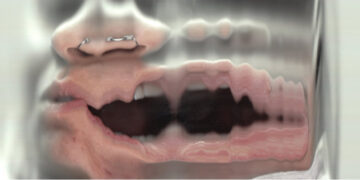
For the Net Encounters series, artist Ceylan Öztrük has developed a work that invites everyone to contribute to a Google Drive document that is co-written by the audience and the artist. The audience is invited to either simply follow the development of the text online or to edit it and add new paragraphs to the story.
While writing is often an intimate and personal experience, in Document3 (Transmission Tower) Ceylan Öztrük has chosen to share this process with the public in order to encourage a creative encounter and exchange. Her work is an experiment that focuses on the new opportunities and possibilities that this exchange can bring. The writing added by the viewers transforms the work-in-progress text into a performative act; Google Drive becomes a stage on which the performance takes place and its development can be witnessed, rather than a finished work. By inviting the audience to participate in the document, Öztrük relinquishes some of her control over the development of the work, leaving the outcome uncertain. In the end, Öztrük will bring together all the contributions received, as well as her own additions and edits, into a final text that acknowledges all participants. To participate in this participatory action and access the online document, visit the artist's website: ceylanoztruk.com.
Ceylan Öztrük is an artist living and working in Zurich. She investigates accepted forms of knowledge and how they have been constructed to become tools of power structures. Öztrük aims to disrupt the conventional flow of information through a multidisciplinary approach in which she proposes to establish new channels parallel to, or sometimes replacing, the already existing ones. Ceylan Öztrük completed her practice-based PhD (2016) at Mimar Sinan Fine Arts University (Istanbul), which she started in 2014 in Vienna at the Academy of Fine Arts. She received her graduate and undergraduate degrees from the Fine Arts Faculty of Anadolu University. Some of her exhibitions and performances are: Oriental, Theater Gessnerallee, Zurich (2020); Am a Mollusk, too; re/producing tangents, Longtang, Zurich (2020), IV Berliner Herbstsalon, Berlin (2019); Oriental Demo, My Wild Flag Festival, Stockholm (2019), Building Poems, 1.1, Basel (2018); Speculative Domestics: Ai (Artificial Intimacy) Showroom, Alienze, Lausanne (2019); Call me Venus, Mars, Istanbul (2016).
Year: 2021
Type:
Link to the artwork:
Artist website: http://ceylanoztruk.com
Net Encounters was generously supported by the Swiss cultural foundation Pro Helvetia.